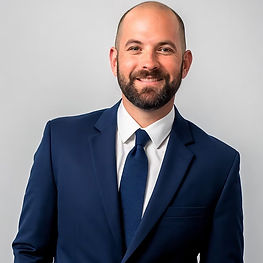What Is Vicarious Trauma?
- Dec 4, 2020
- 10 min read
Updated: Nov 15

This complex psychological response, where the trauma of others reshapes your own mind, demands immediate and informed attention. I've broken down the definition, the subtle shifts it causes, and the concrete actions you can take to manage this burden. You'll find a clear, actionable path to understanding and protecting your emotional health from this secondary form of stress.
What is the core difference between vicarious trauma and compassion fatigue?
The core difference is the nature of the change. Vicarious trauma is a fundamental, long-term shift in a person's worldview, altering core beliefs about safety and hope. Compassion fatigue is primarily chronic emotional and physical exhaustion or burnout resulting from the inherent stress of constant caregiving and helping.
Now that you have the essential definition, it’s time to dive deeper into the specific vicarious trauma symptoms—the emotional, behavioral, and physical signs that signal your worldview is shifting. Keep reading to explore a full roadmap for effective self-care, a clear distinction between these forms of secondary stress, and strategies to build vicarious resilience.
Table of Contents
Understanding the Unseen Impact: What is Vicarious Trauma?
Defining Vicarious Trauma
Vicarious Trauma vs. Compassion Fatigue
Who is Most at Risk of Experiencing Vicarious Trauma?
Recognizing the Warning Signs: Vicarious Trauma Symptoms
Emotional and Psychological Effects
Behavioral and Social Changes
Physical Symptoms
A Clear Roadmap: How to Deal with Vicarious Trauma
Prioritizing Self-Care and Basic Needs
Seeking Professional Help
Developing a Self-Care Toolkit
Supporting Others: How Can You Support Someone Recovering from Vicarious Trauma?
Frequently Asked Questions (FAQ) About Vicarious Trauma
Understanding the Unseen Impact: What is Vicarious Trauma?
Vicarious trauma, also known as secondary trauma or secondary traumatization, is the emotional and psychological distress that results from repeated exposure to the traumatic experiences of others. This is an ongoing process of change over time, where the consistent immersion in others' pain leads to an unfavorable shift in one's own affective and cognitive systems. It is not about simply feeling sad for someone; it is a negative reaction to trauma exposure that can significantly restructure a person's inner experience.
Defining Vicarious Trauma

Vicarious trauma is experiencing the effects of traumatic events through a secondhand source. This can happen after repeated exposure to difficult stories, detailed recounts, or graphic images, often in a professional capacity. For example, viewing crime scene photographs, listening to detailed victim statements, or reading case files filled with tragic stories can all cause an individual to begin to alter their worldview.
This is more than just a passing feeling of stress. It represents an intense, cumulative effect on the helper. Over time, the constant exposure to trauma can prompt an individual to see the world itself through a negative, bleak lens. The person may find that they are experiencing lingering feelings of anger, rage, and sadness about the victimization their clients or patients have endured. This is a profound, deep-seated change; the therapist or helper experiences a worldview change that makes them feel less safe, less trusting, and less hopeful about humanity.
Vicarious Trauma vs. Compassion Fatigue
People often equate vicarious trauma with compassion fatigue, but there is a key difference between the two. Understanding this distinction is vital for proper vicarious trauma treatment and self-care.
Feature | Vicarious Trauma (Secondary Trauma) | Compassion Fatigue |
Core Effect | A profound worldview change, altering beliefs about self, others, and the world (e.g., the world is a dangerous place). | Physical and emotional exhaustion from the inherent stress of helping others. |
Manifestation | Cognitive and affective changes, pessimism, cynicism, difficulty managing emotions. | Burnout, reduced ability to empathize, chronic tiredness, lack of energy. |
Pace | Develops as an ongoing process of change over an extended period. | Can develop suddenly or gradually, primarily tied to the emotional toll of caregiving. |
While compassion fatigue vs. vicarious trauma are different concepts, they can and often do coexist. Vicarious trauma's focus is on the long-term, deep-seated change in one's psychological framework.
Who is Most at Risk of Experiencing Vicarious Trauma?
Vicarious trauma can happen to anyone who is regularly exposed to the trauma of others. However, certain professions have an increased risk due to their constant proximity to those who have suffered from traumatic events.
First Responders: Police officers, paramedics, and firefighters.
Mental Health Professionals: Counselors, therapists, and psychologists.
Social Workers: Especially those dealing with child protective services or domestic violence.
Medical Professionals: Emergency room staff, nurses, and doctors.
Journalists: Reporters covering war, disaster, or crime.
Legal Professionals: Lawyers and judges who review detailed, often graphic, case information.
Providing vicarious trauma training to those in these occupational fields can help each person best prepare for the possibility of this emotional and psychological toll. They need practical strategies for managing the trauma exposure response.
Recognizing the Warning Signs: Vicarious Trauma Symptoms
Vicarious trauma can present itself in a number of different ways. While each person may experience it uniquely, there are clear, identifiable vicarious trauma signs and symptoms that help identify it in oneself or loved ones.
Emotional and Psychological Effects
Vicarious trauma can make it difficult to manage one's own emotions. This is a core part of the deep worldview change that occurs.
Emotional Outbursts and Mood Swings: Feelings of anger, irritation, or sadness expressed toward the outside world may become more prevalent. These can feel like a personal response to the suffering witnessed.
Pessimism and Cynicism: A sense of feeling overwhelmed, leading to a negative outlook on life, people, and events. This often includes a breakdown of hope.
Heightened Anxiety and Fear: The world starts to feel unsafe, leading to excessive worry about personal safety and the safety of loved ones.
Difficulty with Emotional Regulation: An inability to control emotional responses, leading to either emotional numbing or intense, disproportionate reactions.
Intrusive Thoughts: Ruminating on the traumatic experiences of others, sometimes manifesting as vivid images or upsetting thoughts.
Behavioral and Social Changes
The psychological toll often translates into noticeable changes in behavior and relationships.
Social Isolation: Shutting oneself off from others around them in an attempt to protect themselves from their now deeply uncomfortable worldview. This is a defensive move to limit further exposure to pain.
Decreased Productivity: Difficulty focusing, low motivation, and poor concentration at work or home. This is a form of cognitive exhaustion.
Change in Sleep Patterns: Insomnia, difficulty falling or staying asleep, or nightmares related to the secondary trauma exposure.
Destructive Coping Mechanisms: Turning to substances such as drugs or alcohol to further detach themselves from the constant exposure to tragic stories.
Over-Identification: Becoming overly invested in the traumatic experiences of others, blurring the line between professional distance and personal involvement.
Physical Symptoms
The mind and body are connected, so the psychological stress of vicarious trauma can manifest physically.
Fatigue and Exhaustion: Chronic, pervasive tiredness that is not relieved by sleep.
Physical Tension: Headaches, muscle pain, or chronic bodily discomfort.
Changes in Appetite: Significant weight loss or gain due to a change in eating habits.
Compromised Immune System: Frequent illness due to the body being in a constant state of high alert (stress response).

A Clear Roadmap: How to Deal with Vicarious Trauma
Dealing with vicarious trauma is exceptionally difficult, as it is the result of a long period of repeated exposure to profoundly negative recounts of life-altering experiences. However, recovery is possible. Overcoming vicarious trauma and fostering vicarious resilience starts with a dedicated and consistent effort toward self-care and professional support.
Prioritizing Self-Care and Basic Needs
The first step in healing is establishing a baseline of stability. The goal is to regain much of the physical and emotional energy lost during the period of exhaustion and fatigue.
Maintain Physical Health: Tend to the basics each day: keep a healthy, consistent diet, and encourage a consistent sleep schedule. A well-rested, nourished body is more resilient to emotional stress.
Establish Boundaries: Create clear separation between work and personal life. Limit the number of traumatic cases you take on, and practice leaving the difficult stories at the office.
Mindfulness Practices: Engage in activities that anchor you in the present moment, such as meditation, deep-breathing exercises, or yoga. These are powerful tools for emotional regulation.
Creative Outlets: Explore self-care outlets that challenge one's negative worldview. Art, music, or nature therapy can showcase the possibility of happy endings or simple beauty amidst hardship.
A mental health professional can provide a structured vicarious trauma toolkit and treatment plan. They can help process the complex feelings that arise from secondary trauma exposure.
Therapy: Working with a counselor specializing in trauma can provide a safe space to explore and process the shift in your worldview. Cognitive Behavioral Therapy (CBT) and Eye Movement Desensitization and Reprocessing (EMDR) are often effective.
Peer Support: Connecting with colleagues who share similar work experiences can reduce feelings of isolation and validate your experience of secondary traumatic stress.
Developing a Self-Care Toolkit
This is a personalized set of routines and coping strategies to actively manage and mitigate the ongoing effects of trauma exposure.
Reflection and Journaling: Set aside time to process feelings and monitor your vicarious trauma checklist symptoms. This helps in tracking the cumulative effect of the work.
Ritual Closure: Create a daily ritual to signal the end of work and the transition to personal time. This could be a walk, a specific song, or a change of clothes.
Active Leisure: Engage in hobbies that are completely unrelated to your professional life. Focus on activities that bring joy, a sense of accomplishment, or simple relaxation. For example, learning to bake or taking a dance class.
Scheduled Breaks: Build short, genuine breaks into your workday. Stepping away from the intensity of the work, even for five minutes, can prevent the buildup of stress.
Supporting Others: How Can You Support Someone Recovering from Vicarious Trauma?
Learning to help someone experiencing vicarious trauma requires patience, understanding, and a non-judgmental approach. Your role is to be a supportive anchor while they work through their internal shifts.
Validate Their Experience: Acknowledge that vicarious trauma is real. Say, "What you are feeling is a normal and valid reaction to dealing with such heavy things." This helps counter their feelings of isolation.
Encourage Professional Help: Gently suggest seeking a therapist or counselor. You can even offer to help find resources or make the first appointment.
Practice Self-Care Together: Promote self-care, or even demonstrate the practice yourself. Invite them along to therapeutic outlets like a yoga class or a hike. This scaffolds the practice for implementation in others.
Be Flexible and Forgiving: Recovery can take a long time, as the trauma has often spent a long time eroding one’s worldview and emotional state. This may mean forgiving emotional outbursts and cynicism that may be present. Work out flexible schedules or plans to compromise with a person’s difficult emotional state.
Healing is achievable, and your presence and consistent support can be the motivation they need, a sign that positivity and recovery are obtainable goals. Your commitment helps them reintroduce the idea of optimism into daily life, proving that even amidst hardship, human connection remains. To continue your journey of understanding mental wellness, explore the deep connection between physical activity and stress management in this article.
Frequently Asked Questions
• What is the difference between vicarious trauma and compassion fatigue?
Vicarious trauma is a profound, long-term shift in a person’s worldview and psychological framework due to repeated exposure to others' trauma. Compassion fatigue is the inherent physical and emotional exhaustion, similar to burnout, that comes from the chronic stress of helping others. The former changes how you see the world; the latter drains your energy to interact with it.
• Who is most at risk of experiencing vicarious trauma?
While anyone can experience it, those in helping professions like first responders, social workers, therapists, and journalists have an increased risk. This is due to their consistent, direct proximity to detailed accounts and images of suffering, making the vicarious traumatization symptoms more likely to develop.
• What are some of the first signs of vicarious trauma?
Early signs of vicarious trauma include difficulty managing emotions, feelings of anger or sadness directed at the outside world, increased pessimism or cynicism, social withdrawal, and chronic fatigue. Other signs include changes in sleep and increased reliance on destructive coping mechanisms like alcohol.
• Is vicarious trauma the same as "second-hand PTSD"?
Vicarious trauma is sometimes casually referred to as 2nd hand ptsd or indirect trauma, but it is a distinct clinical concept. While its symptoms can overlap with Post-Traumatic Stress Disorder (PTSD), vicarious trauma is specifically defined as the transformation in the helper's worldview and self-identity, rather than the sudden onset of fear and hyper-arousal seen in primary PTSD.
• What are some effective strategies for vicarious trauma self-care?
Effective strategies center on establishing strict work-life boundaries, maintaining a consistent focus on basic needs (sleep, diet, exercise), engaging in genuine mindfulness practices, and seeking professional therapy. Developing a personalized vicarious trauma toolkit with rituals for ending the workday is also crucial for preventing the long-term cumulative effect of trauma exposure. You can read more about building resilience in this helpful piece.
Experiencing the effects of vicarious trauma can be an overwhelming and isolating journey. At Chateau Health and Wellness Treatment Center, we understand what you're going through, and our dedicated team is here to help you navigate these complex feelings. We believe in taking a proactive approach to your mental and emotional well-being, and we've developed comprehensive strategies to help you or a loved one overcome the challenges of vicarious trauma. Our goal is to work alongside you, providing the tools and support you need to reclaim a sense of hope and optimism. If you're ready to start your healing process, we're here to assist you. Contact us today at (435) 222-5225 and let us be your partner in recovery.

About The Author
Ben Pearson, LCSW - Clinical Director
With 19 years of experience, Ben Pearson specializes in adolescent and family therapy, de-escalation, and high-risk interventions. As a former Clinical Director of an intensive outpatient program, he played a key role in clinical interventions and group therapy. With 15+ years in wilderness treatment and over a decade as a clinician, Ben has helped countless individuals and families navigate mental health and recovery challenges.
Danny Warner, CEO of Chateau Health and Wellness
Brings a wealth of experience in business operations, strategic alliances, and turnaround management, with prior leadership roles at Mediconnect Global, Klever Marketing, and WO Investing, Inc. A graduate of Brigham Young University in Economics and History, Danny has a proven track record of delivering results across diverse industries. His most transformative role, however, was as a trail walker and counselor for troubled teens at the Anasazi Foundation, where he directly impacted young lives, a personal commitment to transformation that now drives his leadership at Chateau.
Austin Pederson, Executive Director of Chateau Health and Wellness
Brings over eight years of experience revolutionizing mental health and substance abuse treatment through compassionate care and innovative business strategies. Inspired by his own recovery journey, Austin has developed impactful programs tailored to individuals facing trauma and stress while fostering comprehensive support systems that prioritize holistic wellness. His empathetic leadership extends to educating and assisting families, ensuring lasting recovery for clients and their loved ones.










